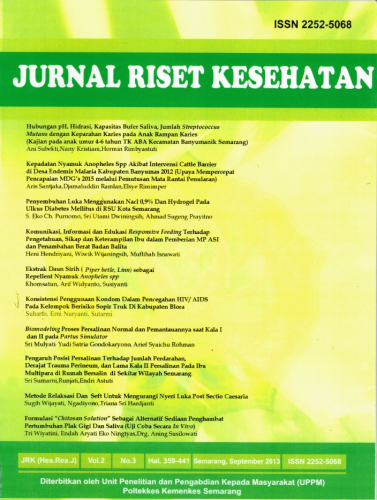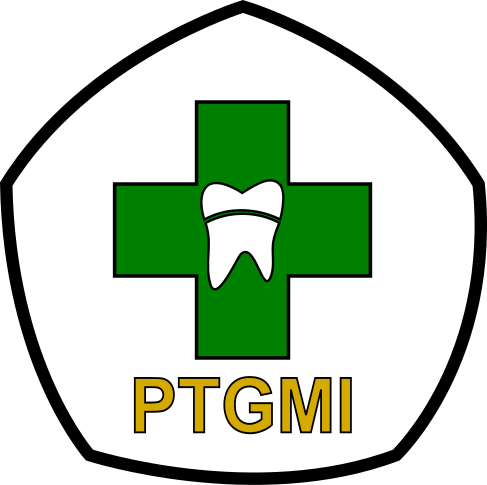PSYCHOLOGICAL RESPONSE (STRESS) IN STROKE PATIENTS WITH PHYSIOTHERAPY PROGRAMS
Abstract
Strokes can occur at any age, but the number of strokes increases with age. Stroke is caused by disruption of blood flow to the brain, usually because blood vessels rupture or are blocked by blood clots thereby cutting off the supply of oxygen and nutrients that cause damage to brain tissue. The purpose of this study is to describe the symptoms of stress in stroke patients. Data collection uses observation and interviews. Data validation techniques using triangulation of data sources and methods. The data analysis technique uses an interactive model of qualitative analysis. The results found that stroke sufferers generally experience stress, which is caused by the mind and mood, which is thinking about a disease that does not go away, and must be forced to depend on others when doing daily activities. Stress in stroke patients can be seen from physical, emotional, and behavioral signs. To reduce stress as well as an effort to relieve or cure a stroke, one with behavioral therapy is based on learning theory, and perform self-improvement psychologically or mentally, physically and socially, as well as spiritually.
Keywords
Full Text:
PDFReferences
Adientya (2012). Stres pada kejadian stroke. Jurnal nursing studies, volume 1, No 1 Thn 2012:183-188
Andreasen , N.C dan Black D.W. (2001). Introductory of psyhiatry. 3rd ed. USA: British Library.
Bamford J, Sandercok P ,Dennis M, Burn J, Warlow C.(1991), Classification and Natural History of Clinically Indentifiable Subtype of Cerebal Infarction. Lancet 1991:337:1521-6
Ceylan, A.B.A. (2014). Epidemiological study of the patient diagnosed as ishemic stroke in the emergency department. The journal of academic emergency medicine. 2014 (19): 567-99
Chapa D.W. Akintade B, Son H, Woltz P, Hunt D, Friedmann f, Thomas S.A. (2014). Pathophysiological Relationsships Between Heart Failure an Depression and Anxiety. Journal of general internal medicine, 2014 (21): 146-51.
Chaplin, J.P.(1997). Kamus lengkap psikologi. Jakarta: PT. Raja Grafindo Persada
Fitriyani. Kharunnisa N. (2014). Hemiparese Sinistra, Paresenervus VII,IX,X,XII e.c stroke Non- Hemorrhagic. Medula Lampung: 2014, 2 (3): 52-9.
Gilman S. (1992). Advances in Neurology. N. Engl J. Med, 1992:326:1672-6.
Gunarsa , S.D (2011). Psikologi Praktis: Anak Remaja dan Keluarga. Jakarta: PT.BPK Gunung Mulia.
Gross, J.J. (2007). Handbook of emotion regulation. New York: the guildford press.
Holmes J, Murry J, Gillespie D, Lightbody E Watkims C.L Pieter K dan Burton A.C. (2011). Interventions for treating anxiety after stroke. Cochrane database of systematic review, Issu 12.
Horowitz M. (2002). Stres response syndromes and their treatment in handbook of stres, theoretical and clinical aspects, goidbct breznltz S (eds). New York: the free press.
Indiyarti, Riani. (2003). Dampak hiperglikemia terhadap kelangsungan hidup penderita stroke. J kodekteran trisakti, september-desember 2003, Vol. 22 No 3: 105-109.
Jacob, George. (2001). Stroke. New Zaeland: clinical trialis research unit, Aucklan.
Juanidi, I. (2011). Stroke waspadai ancamannya. Yogyakarta: PT. Bhuana ilmu populer, kelompok gramedia.
Kneebone, F.W.I.I. (2013). Treating Anxiety After Stroke Using Cognitive Behaviour Therapy: Two case. Neurophsycologis Rehabilitation, Vol . 23 No. 6, 798-810.
Kumolohadi, R. (2001). Tingkat stres dosen perempuan UII di tinjau dari dukungan suami. Yogyakarta : fakultas psikologis universitas gadjah mada.
Laily, Siti Rohmatul.(2007). Hubungan karakteristik penderita dan hipertensi dengan kejadian stroke iskemik. jurnal berkala epidemiologi, Vol 5 No 1, Januari 2017:48-59.
Luchkmann dan Sorensen’s (1993). Medical surgical nursing. Philadelphia: WB. Saunders Company.
Lumbantobing, M.S. (1998). Stroke berencana peredaran darah otak. Jakarta : balai penerbit FGUI.
Maramis, W.F (2014). Ilmu kodekteran jiwa. Surabaya: Airlangga University Press.
Maramis, W.F. (2009). Catatan ilmu kedokteran jiwa. Edisi 2. Surabaya : Airlangga University Press.
Nably, R.A. (2012). Deteksi dini gejala dan pengobatan stroke. Yogyakrta : Aulia Publishing.
Nastiti.(2012). Gambaran faktor risiko kejadian stroke pada pasien stroke rawat inap di rumah sakit krakatau media tahun 2011. Jakarta : Universitas Indonesia.
Roger, V.L. (2011). Hert discase and stroke statistics 2011 update: a report from the American Heart Association. Circulation. 123: e18- 1209.
Sadock B.J dan Sadock V.A. (2010). Buku ajar psikoatri klinis. Jakarta : penerbit buku kedokteran EGC.
Santrock J.W.(2002). Life span development : perkembangan masa hidup. Edisi kelima (terjemahan). Jakarta: Erlangga.
Sarafino, Edward P. (1994). Health psychology. 2 th Edition. New York: Jhon Wiley & Sons, Inc.
Sari, N. (2019). Stres kerja. Available from: http://damandiri.or.id/life/novitasari adbab2.pdf,diakses tanggal 1 Maret 2019.
Smeltzer S.C dan Bare B.G (2002). Buku ajar keperawatan medikal bedah brunner & suddarth. Volume 3, Edisi 8. Jakarta : penerbit buku EGC.
Soewadi. (2010). Bahan kuliah ilmu kedokteran jiwa. Yogyakarta: fakultas kedokteran UGM.
Sukadiyanto. (2010). Stres dan cara menguranginya. cakrawala pendidikan, Februari 2010 Th.XXIX,No.1:55-66.
Widjaja, D. (1999). Perkembangan penyelidikan mutakhir faktor risiko stroke. Kumpulan makalah simponsium contiuning medical education (CME). The vith course on stroke.1999:1-25.
DOI: https://doi.org/10.31983/jrk.v9i1.5724
Article Metrics
Refbacks
- There are currently no refbacks.
Copyright (c) 2020 Jurnal Riset Kesehatan














































